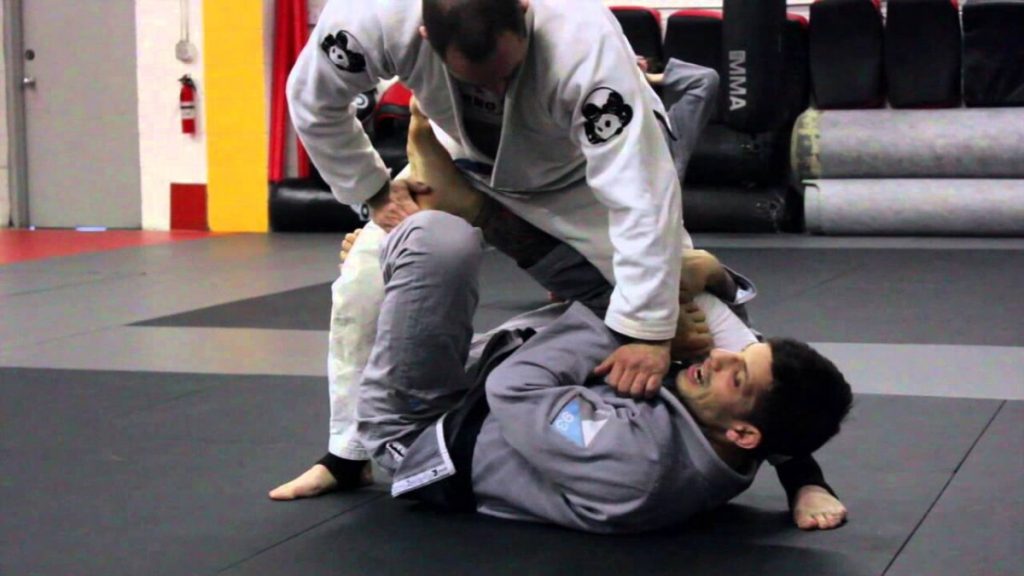BJJ X-Guard: Over the past few decades, Brazilian Jiu-Jitsu has quickly developed into a ground-based combat technique. The stances and techniques of Jiu-Jitsu have expanded along with the art form, each offering a distinct set of benefits. The X-guard, one of the many iterations of the guard that have appeared, serves as a link between the traditional and modern guards. Today, we will discuss the fundamentals of this classic guard stance.
What is The X-Guard?
In the 2000s, the renowned Marcelo Garcia created the open-guard variation known as the X-guard. It’s a kind of open guard where the idea is to make your opponent unbalanced so you can sweep or wrestle up. Setting up your legs in the shape of an “X” and positioning yourself squarely beneath your opponent’s centre of gravity can help you restrict their defensive manoeuvres. As we proceed, we shall dig more deeply into the mechanics and methods.
Origins and Evolution
The history of the X-guard is vague at best, with many accounts emerging periodically. But the stance became well-known in the early 2000s when elite athletes—like the previously mentioned Marcelo Garcia—showcased its efficacy in a number of tournaments. From novices to world champions, it has now become a mainstay in the toolbox of many Jiu-Jitsu competitors.
You might also be interested in reading this: What Does the BJJ X-Guard Mean? Everything You Need To Know
Advantages Of Using X-Guard

The ability to control and deflect your opponent when you are in a supine posture is the main benefit of the X-guard (Kuzushi). By placing your legs in an “X” beneath your opponent, you may quickly disturb their foundation and make it more difficult for them to stay solid. This intrinsic volatility presents several opportunities to execute sweeps and establish dominating holdings.
Additionally, it is challenging for the opponent on top to transition to an attacking cycle because of the X-guard’s “sticky” character. They can’t just move without thinking since they would soon trip and fall. It is reasonable to conclude that you have the advantage as long as your opponent is trapped inside your X-guard, at least in terms of protecting yourself and gaining additional attack possibilities.
Different X-Guard Types
There are several kinds of X-guards in BJJ, so it’s important to understand that before we go into the technique itself. With the exception of the basic version, not all varieties will be covered in this post; nonetheless.
Recall that breaking new skills down into smaller, more manageable steps is the best way to acquire them. Utilise this video as a guide or reference for the lessons you may learn from studying the X-Guard for the time being. When you introduce new weaponry into your game, always remember to stick to your plan. This will increase your awareness of the methods you want to master.
The X-Guard In Action
Black Belt in BJJ The entrance, maintenance, and sweep mechanisms of the regular version of the X-Guard are shared by Lachlan Giles. He begins by showing how the butterfly guard enters. In No-Gi grappling, the butterfly guard is the most often used open guard and a great place to start when transitioning to the X-Guard. Taking the inside stance from the butterfly guard, post close to their armpits to propel them forward. Your opponent should be forced to plant their feet on the mats and move past your head as a result of this.
From here, move beneath their body and hook one leg. Form an “X” with your legs, one leg blocking at the knee and the other around the hip. Make sure you tighten everything up and eliminate any loose ends as much as you can. Imagine that you are expanding your opponent’s base by flaring your hooks in different directions to assist you in visualising this. As you flex your legs, hold fast to your opponent’s kneecap to keep them from escaping and tilt them sideways with your knee. You may retain the X-Guard even while facing formidable training partners by following these procedures.
He demonstrates the traditional precise standup sweep for the finish. While you take out your top hook, force your opponent to slide sideways. As you kick and rise, keep your foot on their thigh and use your grasp to hold onto the other leg. The motion ought to resemble the fundamental technical stand-up that a white belt learns. When you stand up, you can either complete the takedown or move to the back.
The X-Guard’s Path

The adaptability of the X-guard is what makes it such a powerful position. This guard is effective in both No-Gi and Gi Jiu-Jitsu. Even in mixed martial arts (MMA), it may be effective if you enter the position carefully (since blows are always a possibility). It is a vital weapon for guard experts since it is an effective backup guard to the butterfly and single-leg X. Even while getting into the X-guard may take a few steps, once you’re there, it’s probably one of the finest open guard positions to dominate your opponents.
Getting The X-Guard Right
Like other BJJ moves, the X-guard takes a great deal of understanding, commitment, and practice—many hours of it. Drilling the position often is crucial, with an emphasis on entry, sweeps, and transitions. Sparring offers a way to evaluate how well the X-guard works against opponents who are resisting and how well it adjusts to different defensive tactics.
Moreover, examining the matches of elite players who succeed in the X-guard might provide insightful information. A greater comprehension of the nuances of the position may be gained by watching their setups, sweeps, and modifications.
In summary
To sum up, the X-guard is evidence of Brazilian Jiu-Jitsu’s constant evolution. It embodies the ideas of technique, control, and leverage in the art. Posts like the X-guard will be important as long as BJJ is expanding and changing. Both now and in the future, grapplers will find great use for this amazing guard. See if the X-guard works for you by giving it a try right now.

